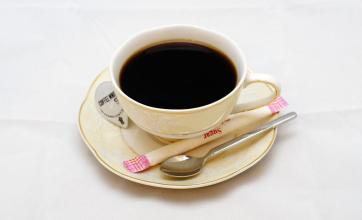Slightly lemon-scented Brazilian Bourbon Rivida coffee beans flavor characteristics grinding scale taste quality treatment
Introduction of Brazilian Coffee beans
Brazilian national treasure coffee beans: Brazilian yellow bourbon coffee
Raw bean source: yellow cherry fruit peculiar to Brazilian yellow bourbon
Product characteristics
Characteristic yellow cherry fruit, fully ripe and baked
Baking technology, showing a hint of lemon fragrance, soft
And acid and bourbon species are characteristic of round and thick.
The sweet feeling is a high quality with good quality and low price.
The "bourbon" in Bourbon Santos, Brazil comes from the Bourbon Indian Arabica Coffee Tree. The island of Bourbon, now known as Reunion, was once a thriving place for Arabica coffee. Arabik coffee trees grown on the island were introduced around the world, and Brazil's Bourbon Santos is their descendant. Sandoz comes from the port of Sandoz, a port in the Atlantic Ocean in southeastern Brazil. Among the coffee exported from the port of Santos, there are Brazilian coffee from different producing areas, and the more guaranteed quality comes from the southern states of Sao Paulo, Parana and Minas Gerais, of which Minas Gerais has the best quality.
In Brazil, because the planting area of coffee is too large and the degree of mechanized production is relatively high, people often harvest ripe and green fruits together, and there is usually no sorting process. Sometimes coffee fruit is mixed with coffee branches and leaves. Not only that, Brazilian coffee beans are sun-dried. Farmers put coffee beans of different maturity together and expose them in the sun, so that coffee beans are mixed with soil and various impurities in the first place. sometimes overripe and rotten coffee fruits can also affect the flavor of coffee beans.

Important Notice :
前街咖啡 FrontStreet Coffee has moved to new addredd:
FrontStreet Coffee Address: 315,Donghua East Road,GuangZhou
Tel:020 38364473
- Prev

Pure, balanced Panamanian Coffee Flavor description treatment quality characteristics introduction of taste grinding scale
Raw bean information: grower: Familia Chiari area: Poquet Town, Chiriki Province, Panama varieties: complete washing height: 1500 m harvest time: October to March soil: volcanic ash soil cup test key words: caramel sweet, sweet, pure, balanced, medium alcohol benefits from Boquete's unique climate, distinct dry and wet seasons, plenty of sunshine and precipitation, and sources.
- Next

What flavor description method is suitable for Burundian coffee beans? introduction to the grinding scale of taste characteristics
What flavor description method is suitable for Burundian coffee beans? grinding scale introduction: Burundi has the most diverse and successful coffee industry in the world, and has its own characteristics. Coffee in this country was introduced by Belgian colonists in 1930 and is now grown only on small farms. Unfortunately, many of these farms are located in war-torn Rwanda (Rwan)
Related
- Detailed explanation of Jadeite planting Land in Panamanian Jadeite Manor introduction to the grading system of Jadeite competitive bidding, Red bid, Green bid and Rose Summer
- Story of Coffee planting in Brenka region of Costa Rica Stonehenge Manor anaerobic heavy honey treatment of flavor mouth
- What's on the barrel of Blue Mountain Coffee beans?
- Can American coffee also pull flowers? How to use hot American style to pull out a good-looking pattern?
- Can you make a cold extract with coffee beans? What is the right proportion for cold-extracted coffee formula?
- Indonesian PWN Gold Mandrine Coffee Origin Features Flavor How to Chong? Mandolin coffee is American.
- A brief introduction to the flavor characteristics of Brazilian yellow bourbon coffee beans
- What is the effect of different water quality on the flavor of cold-extracted coffee? What kind of water is best for brewing coffee?
- Why do you think of Rose Summer whenever you mention Panamanian coffee?
- Introduction to the characteristics of authentic blue mountain coffee bean producing areas? What is the CIB Coffee Authority in Jamaica?

